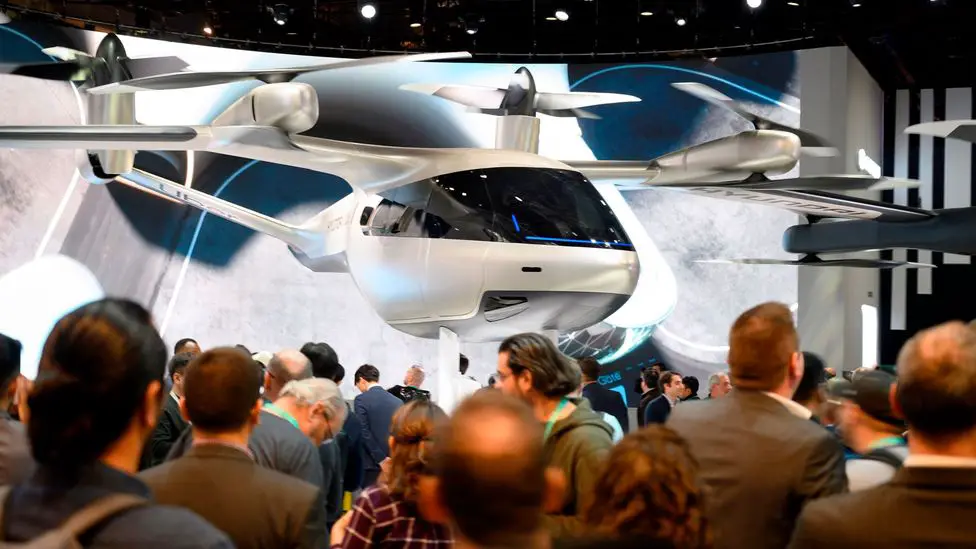
How Close Are We to Seeing Flying Cars?
The dream of flying cars has captivated the imagination for over a century. From Leonardo da Vinci’s early designs to sci-fi depictions of sleek vehicles zooming above crowded cities, the flying car represents the future of transportation. But how close are we really to making this vision a reality? In this article, we’ll examine the progress, hurdles, and outlook for personal aerial vehicles becoming an everyday option.
A Brief History of Flying Cars
The concept of flying cars dates back to the early 20th century, with pioneers filing patents and constructing prototypes inspired by the newfound wonder of airplanes. However, these early designs faced insurmountable challenges. Limited engine power and the complexity of vertical takeoff made flying cars impractical compared to conventional aircraft.
In the 1950s and 60s, the rise of the helicopter and other VTOL (vertical takeoff and landing) vehicles renewed interest in personal aerial transport. Companies like Chrysler, Curtiss-Wright, and Aerocar built roadable aircraft that could convert from car to plane modes. But performance was lacking, and safety concerns limited adoption.
Recent decades have seen more viable flying car initiatives take shape thanks to advances in electric engines, lightweight materials, stabilization technology, and more. Today, we stand closer than ever to the flagship products promised by companies like AeroMobil, PAL-V, and Kitty Hawk capturing public intrigue and investment.
Current State of Flying Car Technology
Modern flying car prototypes utilize various designs and capabilities. Here’s an overview of the main categories:
Roadable Aircraft
Similar to earlier efforts, today’s roadable aircraft function as both cars and planes, with the ability to transition between driving and flying modes. Wings and propellers fold away for road use. Examples include the AeroMobil 4.0 and Terrafugia Transition.
Multicopters
Utilizing multiple rotors like a helicopter or drone, multicopters offer vertical takeoff and landing (VTOL) capabilities. They require less space for runway access but are typically designed for only air transportation. Examples include the Volocopter 2X and Ehang 184.
Hybrid Lift Vehicles
Combining wings for horizontal flight with rotors for VTOL, these aim for efficiency in both road and air settings. Examples include the Kitty Hawk Cora and Opener Blackfly.
Electric vs Gas Power
Most newer models are electric for greater efficiency and lower emissions. But some still rely on gasoline, like the Terrafugia Transition. Battery and charging tech limitations have hindered all-electric multicopters from achieving longer ranges.
Automation vs Manual Flight
Higher levels of autonomy introduce safety benefits and accessibility to amateur pilots. But many flying car designs still involve traditional manual controls, especially roadable aircraft. Autonomous flight features are more prominent in multicopters.
Passenger vs Personal Scale
Some flying cars are designed to carry multiple passengers like air taxis. Others are meant for individuals as personal vehicles. Capacity ranges from 2 to 5+ passengers depending on the model.
So in summary, current flying car concepts vary across these design factors but most demonstrate VTOL, hybrid lift, electric propulsion, and autonomous features to some degree.
Benefits of Flying Cars
If successfully implemented, what could flying cars accomplish for consumers and society?
Faster Point-to-Point Travel
Bypassing road congestion and traffic lights, flying cars could significantly reduce commute times and enable faster regional mobility. Air travel between destinations under 100 miles appears far more time efficient.
Flexible Urban Mobility
With VTOL capability reducing airport dependency, flying cars offer convenient access to urban centers. Minimal ground infrastructure also enables routes between locations lacking public transit options.
Easier Long-Distance Travel
The door-to-door direct route of flying cars appeals over lengthy airport trips for long journeys. Self-piloted personal aircraft could enable faster, cheaper travel between cities.
Fun and Exciting Transportation
For aviation enthusiasts, flying cars promise the thrill of flight from the convenience of home. The core appeal resides in experiencing personal aerial mobility.
Environmental Sustainability
With electric power, flying cars could provide low-emission transport relative to gas cars. But only if supporting infrastructure like renewable energy generation and battery production also achieve sustainability.
Economic Opportunity
New flying car manufacturing and operation roles may generate jobs and revenue. Air taxi services could develop into major transit and logistics industries as well.
Challenges to Mainstream Adoption
Unfortunately, significant barriers across technology, infrastructure, regulation, economics, and public perception continue preventing flying cars from reaching mass-market viability.
Technical Limitations
Current prototypes remain hampered by factors like battery life, stability in windy conditions, noise, and safety. Companies are working to improve critical performance metrics to equal or surpass traditional cars and aircraft.
Infrastructure Deficits
Limited recharging stations, hangars, helipads, and air traffic systems create infrastructure gaps for seamless door-to-door flying car operations, especially in urban settings.
High Costs
Even if successfully developed, purchasing and operating flying cars will remain cost-prohibitive for average consumers without drastic price drops for vehicles and fuel. Air taxi services could improve access if prices are affordable.
Regulatory Restrictions
Aviation oversight agencies maintain stringent aircraft certification standards. New regulations must be adopted to license and integrate flying cars, from road equipment requirements to airspace management approvals.
Public Skepticism
Beyond aviation hobbyists, everyday citizens remain generally wary of flying car technology and its safety record. Public perception issues could slow social acceptance even if all technical hurdles are cleared.
Liability Concerns
Insuring and assigning legal liability for a new class of vehicles utilizing uncontrolled urban airspace raises complex risk issues. Insurance frameworks will need to be developed along with accident responsibility rules.
Outlook for the Next 5-10 Years
Given these barriers, what timeline can we realistically expect for flying cars transitioning from prototypes pitched by startups to certified products available to consumers?
Gradual Rollout Overseas
We’ll likely see the first wave of approved flying car models introduced for sale outside the US, probably in Asia or the Middle East where regulations are more accommodating. Wider initial adoption seems plausible within 5-10 years in these regions.
Early Air Taxi Services
Air taxi trial runs between airports and city centers may begin operation abroad within the next 5 years as well, though still at very limited capacity pending infrastructure upgrades. These early services will cater to luxury business travel.
US Certification Delay
The comprehensive certification of flying cars for private, commercial, and air taxi use in the US may take closer to 10 years as the FAA moves cautiously on drafting safety rules for nationwide operation. This will slow but not fully prevent US adoption.
Niche Owner Group First
Wealthy individuals with pilot licenses seeking a recreational aircraft will likely form the earliest niche owner demographic, given high purchase costs. But consumer-level ownership may remain infeasible for the average family until at least the 10 year mark, if not longer.
Urban Air Mobility Gradual Growth
Despite tech company promises, comprehensive urban air mobility networks with short-distance public air transit supported by VTOL infrastructure will also realistically take 10+ years to emerge in any substantial capacity globally.
Final Thoughts
Flying cars hold immense promise for revolutionizing mobility, but remain years away from reaching their full potential. Upcoming milestones to watch include regulatory approvals overseas, initial air taxi services in pioneering cities, early sales to luxury consumers, and incremental infrastructure upgrades.
While the exact timeline is uncertain, we can expect flying cars to transition gradually from concepts to niche products over the next 5-10 years. Affordable personal ownership and complete urban air transport integration will take longer still. The path ahead faces challenges, but also offers ample opportunity for innovation.
Frequently Asked Questions
What are the most promising flying car designs right now?
The Volocopter 2X multicopter, AeroMobil 4.0 hybrid car-plane, and Kitty Hawk Cora tiltrotor models currently lead the pack based on flight testing success, safety features, and company investment levels.
When can I buy my own flying car?
You likely won’t be able to purchase a personal flying car within the next 5 years, even as high net worth consumers. Production levels, costs, and regulation won’t enable mainstream sales until at least 10 years from now.
Do we have the battery technology for electric passenger drones?
Current lithium-ion batteries are a limiting factor. They are too heavy and lack sufficient capacity for most multicopter flying car designs. Advances in solid-state batteries could be a gamechanger down the road.
How much will a flying car cost?
Early adopter models will likely cost between $500,000 to $1 million. Dropping below six figures in cost will be a major milestone. Affordability on par with luxury cars may eventually be possible with economies of scale.
Are flying cars safe?
It’s too early to determine comparative safety versus ground vehicles objectively. But flying car companies are touting design features like parachute deployment, lidar sensors, and autonomous control that aim to not just match but exceed normal aviation and automotive safety levels. Real-world data will reveal more over time.
Will we have flying cars like in Back to the Future or The Jetsons?
The excitement around flying cars is understandable, but we need to temper sci-fi depictions with realistic timelines and applications. Near-future flying cars will serve primarily as luxury items and air taxis, not ubiquitous personal transports zipping through crowded cities. Full realization will take decades.
Can existing aircraft be made roadable?
Most aviation experts believe purpose-built flying car designs integrating road and air functionality from the start work better than modifying existing aircraft with drives and wheels. Stability on the ground tends to suffer in roadable retrofits.
How will flying car air traffic be managed?
Early air taxi systems will use simple point-to-point routings, but larger-scale air mobility will require developing low-altitude air traffic management frameworks, likely leveraging a mix of existing control towers and drone-style digital coordination solutions.
Do I need a pilot’s license to use a flying car?
For privately owned flying cars, you will almost certainly need a valid pilot license to legally operate one yourself. Autonomous air taxi services, on the other hand, are aiming for simple app-based booking requiring no specialized user skills.
So in summary, flying car development is proceeding on technology, infrastructure, and regulatory fronts, but mainstream adoption remains years away. Mobility visionaries must balance sky-high expectations with realistic timeframes for incremental advancement on the path to futuristic air transport.






